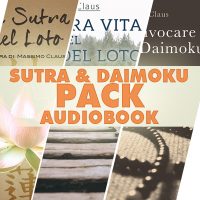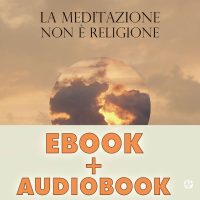Description
Inside of CHANTING PACK you find the following publications:
- Chanting Daimoku
- Chanting Daimoku vol.2
- Chanting Gongyo of Lotus Sutra
- Sanskrit Dharani of Lotus Sutra
THE PRACTICE OF GONGYO
The liturgical practice performed by followers Nichiren Daishonin’s Buddhism is generally carried out twice a day (morning and evening) in front of the altar, which can be that of a temple or one at home (butsudan) – this is in fact a practice that it is carried out both by laics and by monks.
Performing Gongyo means to chant the Hoben and Juryo chapters of the Lotus Sutra (which are respectively the second and sixteenth chapters). Along with this invocation, the Daimoku, Nam Myoho Renge Kyo is also chanted, considered the main and most important practice.
NAM MYOHO RENGE KYO
The Buddhist practice of Daimoku invocation is well known and practiced throughout the world, by the followers of Nichiren Daishonin Buddhism. This practice consists in chanting the words Nam Myoho Renge Kyo like a mantra.
The practice of Daimoku is in Nichiren Daishonin’s words, the beautiful mean to cut physical and spiritual hindrances of all human beings. Literally it is the title of the Lotus Sutra, but actually it stands for the whole contents of that Sutra and for the great teachings of Buddhism.
Was Nichiren Daishonin the first one to chant Daimoku?
DHARANI
Dharani is a Sanskrit term for a type of ritual speech similar to a mantra. The rot of this word means “to hold or maintain”.
The Japanese Buddhist monk Kukai drew a distinction between dharani and mantra. He claims that mantra is restricted to esoteric Buddhist practice whereas dharani is found in both esoteric and exoteric ritual.
Kukai classified mantras as a special class of dharanis and argued that every syllable of a dharani was a manifestation of the true nature of reality – in Buddhist terms, emptiness of self-nature. Thus, Kukai suggests that dharanis are in fact saturated with meaning.








 Italiano
Italiano